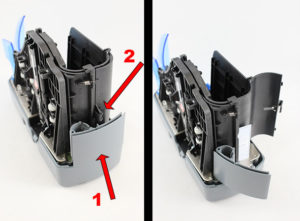| In the last edition of Digital Communications, we began to look at the factors involved in controlling project quality. We examined a number of tools used by project managers to measure and assess risk within a project, and we also briefly discussed a process for controlling risk – Six Sigma. In this edition, we will look more closely at what Six Sigma is and how it can positively impact the results of your project.
Edward Deming was one of the early quality thought-leaders with his Plan-Do-Check-Act (PDCA) process of project design and implantation. This process included fourteen points for transformation management. Other key figures included Joseph Juran (Cost of Quality), Armand Feigenbaum (Total Quality Control), Kaoru Ishikawa (Quality Circles), Philip Crosby (Zero Defects and Continuous Improvement), and Genichi Taguchi (Design of Experiments). Each of these key innovators added to the knowledge base leading up to Six Sigma. So, let’s put poor quality in perspective. If defect levels were just 1% in the U.S., nearly 80,000 checks would be deposited to the wrong accounts every hour, nearly 115 babies would be delivered to the wrong parents each day, and more than 100,000 incorrect prescriptions would be filled each day. Quality is important. Six Sigma strives for zero defects; however, the tolerance level allowed by the process is only 3.4 defects per million (DPM). With this type of quality level we would only see, on comparison across the U.S., 27 checks deposited to the wrong account each hour, 13 misplaced babies each year, and only 34 incorrect prescriptions per day. Now, nobody wants to have any of these things happen to them, but you can see that Six Sigma quality standard greatly reduce the chances of them occurring. The Six Sigma methodology uses a five step procedure to virtually eliminate defects from the process those are: Define; Measure; Analyze; Improve; and Control. The Definition stage determines what is critical to the customer, as well as the allowable deviation from that expectation. The Measure stage determines the actual deviation from the customer expectation. The Analyze stage determines the extent and cause of any defects. The Improve stage uses the design of experimentation process to define what factor is the culprit of the defect. Finally, the Control stage uses the statistical process control methodology to analyze data and control inputs to the process that are leading to the defect. Six Sigma is generally owned and driven by a business owner or champion working with a cross-functional team and is a highly statistical process that results in a verifiable return on investment to the project. It builds upon the history and success of preceding methodologies and benefits customers, production personnel, human resources, sales, and the executive team. In the banking industry, defects translate to lost revenues and, often, customer dissatisfaction and even defection. Investing in quality in the front end will produce defined ROI on the back end of the project. No matter what the project, large or small, attention to quality details will pay off in the long run. |
 Project quality control has gone through a great evolution over the years, from the skilled craftsman of the Middle Ages to high-quality processes controlled by computers, precision machines, and often lasers today. The Japanese took quality to a whole new level after World War II, bringing over many of the best minds from around the world to help them to create these standards.
Project quality control has gone through a great evolution over the years, from the skilled craftsman of the Middle Ages to high-quality processes controlled by computers, precision machines, and often lasers today. The Japanese took quality to a whole new level after World War II, bringing over many of the best minds from around the world to help them to create these standards.




